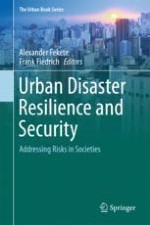2018 | OriginalPaper | Chapter
5. Enhancing Resilience Towards Summer Storms from a Spatial Planning Perspective—Lessons Learned from Summer Storm Ela
Authors : Hanna Christine Schmitt, Stefan Greiving
Published in: Urban Disaster Resilience and Security
Publisher: Springer International Publishing
Activate our intelligent search to find suitable subject content or patents.
Select sections of text to find matching patents with Artificial Intelligence. powered by
Select sections of text to find additional relevant content using AI-assisted search. powered by
